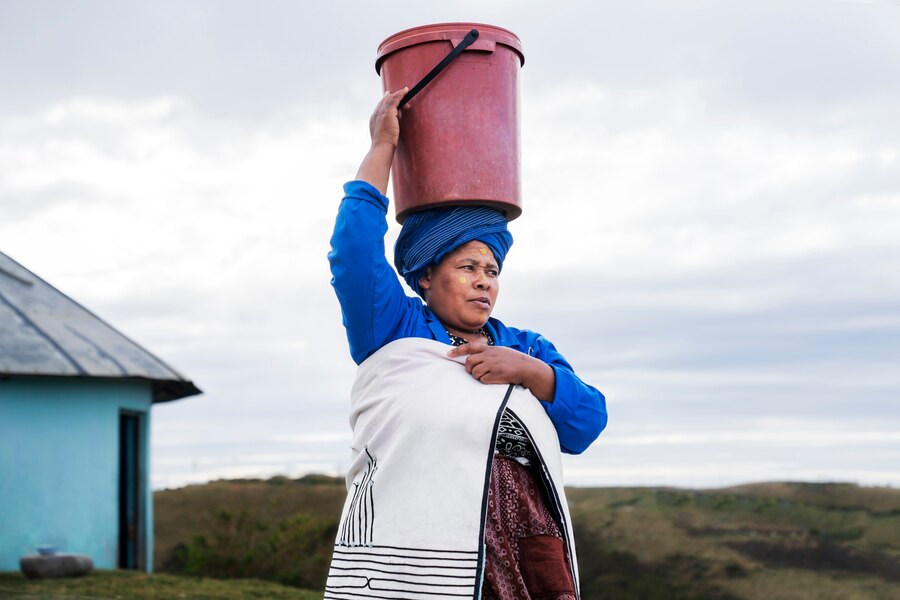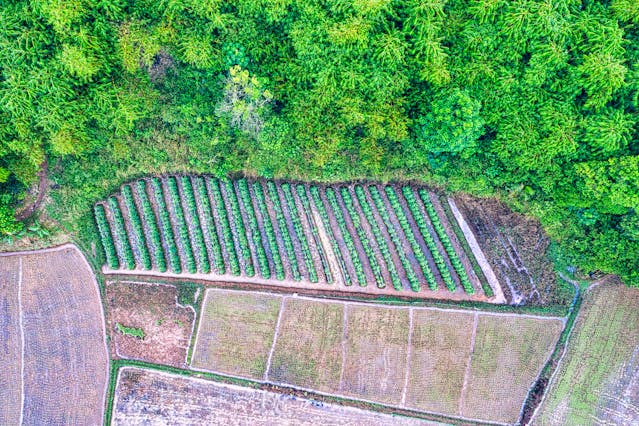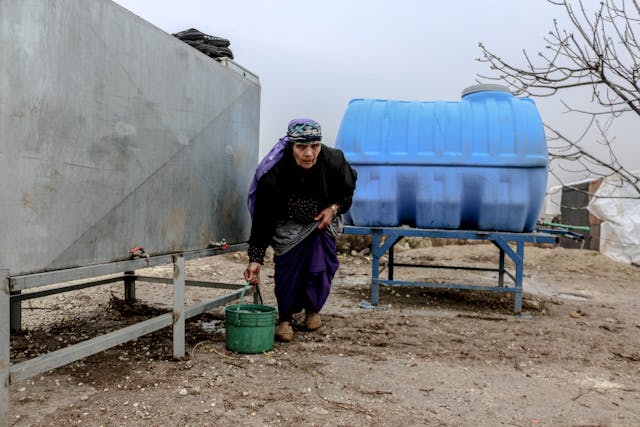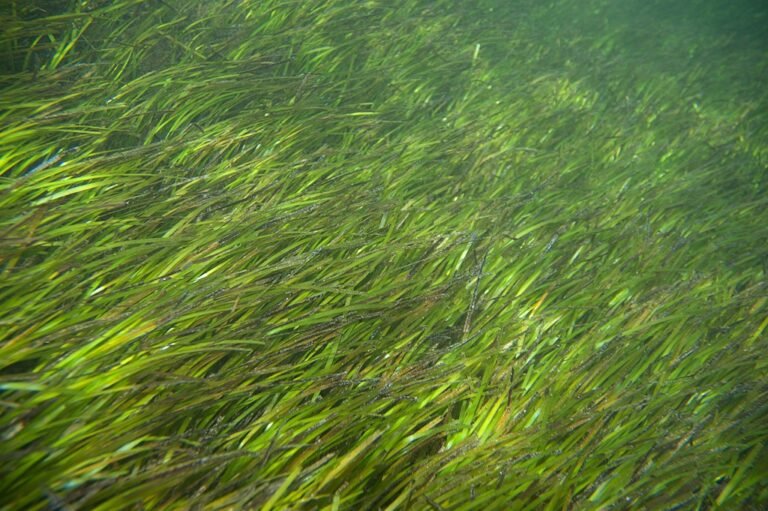Indigenous Practices in Modern Sustainability
Globally, Indigenous communities have always had a deep connection with their natural environment, understanding what it takes to survive, and they have succeeded in doing so for centuries.
The indigenous people are regarded as the guardians of the planet, having thrived in nature with their cultures and traditions. Their unique culture and tradition, which have been preserved and passed down to future generations, incorporate sustainable practices that the modern world can adopt.
Their wisdom and knowledge from generations may be the missing piece to solving the world’s environmental challenges today. Perhaps the indigenous communities possess knowledge that the modern world does not.
Seeking insight from a culture with a profound understanding of nature can make a difference in achieving environmental sustainability.

In This Article
- Indigenous People and Sustainable Development
- Integrating Indigenous Knowledge into Modern Environmental Policies
- How Indigenous Technologies Can Be Useful to Predict Weather Changes
- Case Studies of Successful Indigenous-led Sustainability Initiatives
- The Role of Traditional Ecological Knowledge (TEK) in Climate Resilience
- Indigenous Farming Techniques and Their Relevance Today
- Importance of Promoting and Protecting Indigenous Knowledge
- Sources
Indigenous People and Sustainable Development
The concept of sustainability may be new to individuals in urban environments, but it’s not for the indigenous communities, who have only lived and practised sustainability. Sustainable living is a lifestyle these communities are familiar with, especially since most of them are isolated from the rest of the world.
The drive for urbanisation and economic growth has affected indigenous communities worldwide. Over the last century, commercial logging, mining for resources—especially for oil—and the continuous emission of greenhouse gases have contributed to climate change.
According to a 2014 article published by Arizona State University’s Global Institute of Sustainability and Innovation, most indigenous people across the world live in areas that are impacted by climate change and various forms of development.1
Exploring different areas for economic resources, such as timber harvesting and mining, has raised significant environmental concerns.
In North America, indigenous communities, such as the Inuit and Metis people, are affected by the occurrence of climate change. Although it is a global emergency affecting everyone, indigenous people suffer the most.2
The indigenous Inuit people of North America have suffered greatly due to the impact of climate change. This tribe, located in Canada and Greenland, has seen the destruction of their homes due to flooding. The Inuit people are just one of the many indigenous people worldwide facing such challenges.
Surviving within their environment, Indigenous people around the world often live in isolation and show no interest in transitioning into thriving urban communities.
Living in isolation ensures sustainability is maintained and passed down to future generations. Indigenous sustainability has endured through the community’s cultural values. Although the indigenous communities worldwide made contact with Europeans in the 19th century, and despite some shifts, their culture and traditions have been preserved over many generations.
The indigenous communities live sustainably with no interest in transitioning into an urban economy. However, their livelihoods are affected by the negative environmental implications of urbanisation.
Learn more: Eco-Tourism Vs. Over-Tourism: The Balance for National Parks
Integrating Indigenous Knowledge into Modern Environmental Policies
In today’s world, our advancements in technology have improved agriculture, enabling more food production for a growing population. However, in the process of making food available, we rely on a fossil fuel-driven system that impacts the environment through the emission of greenhouse gases.
Carbon emissions catalyse global warming. While we have been able to grow food with our advanced technology, the environmental consequences are concerning.
Climate change is a global emergency responsible for the melting of glaciers, rising sea levels, changes in weather patterns, and prolonged drought. Human-induced climate change affects food production worldwide, which is very concerning as the global population continues to rise.
According to a research article on harnessing Indigenous technologies for the sustainability management of water, land, and food, the limitations of conventional climate change adaptation and mitigation strategies call for the integration of Indigenous knowledge and technologies to address the issue of climate change.3
Indigenous wisdom and technologies can help resolve these issues and provide effective adaptation strategies to minimise the effects of climate change. The application of indigenous technologies, like agroforestry, and using sacred groves to conserve biodiversity, land, and water can be implemented in modern sustainability to minimise the effects of greenhouse gas emissions, pollution, and environmental degradation.
Climate change impacts the environment greatly, including the quality of groundwater resources that about 1 to 3 billion people rely on globally. As the Earth becomes warmer, the sea level will rise due to melting glaciers.4
How Indigenous Technologies Can Be Useful to Predict Weather Changes
According to a research study, farmers in Africa have utilised several indigenous natural signs for weather predictions based on cultural and environmental beliefs. Common indicators used by farmers for weather predictions include animal behaviours, atmospheric conditions, plant changes and human ailments.5
While these signs are not scientifically proven as reliable predictors of weather changes, local farmers use them to make decisions about planting and crop selection.
These weather prediction signs can sometimes be misleading, but some indigenous people still believe in their accuracy. One example of such indicators that I have heard of is the croaking of frogs during the dry season, which is believed to indicate a higher probability of rain in the coming days.
Additionally, the sighting of a sparrow is also considered a sign that rain is likely in the coming days.
Case Studies of Successful Indigenous-led Sustainability Initiatives
Maasai Conservancies in Kenya
The Maasai community of Kenya has established conservancies to protect the natural habitats of wildlife. The conservancies are owned by the community, and the purpose is to benefit the Maasai people.
Kenya is home to various national parks with wildlife species native to the African continent. The conservancies focus on protecting endangered species like the African elephant, and have also improved the quality of life of the Maasai people through eco-tourism.
Tla-o-qui-aht Tribal Parks in Canada
Tla-o-qui-aht First Nation established Tribal Parks to ensure conservation and cultural preservation. These Parks, located in their traditional territories, prioritise incorporating traditional knowledge with modern conservation methods.
This initiative ensured a large area of temperate rainforest was protected. It supports eco-tourism and promotes the cultural heritage of the Tla-o-qui-aht people.
Māori Fisheries Management in New Zealand
The Maori, the indigenous Polynesian people of New Zealand, practice traditional fisheries management, such as the rahui, which involves temporary bans on fishing in specific areas.
This method, implemented by the Māori people, helps protect marine ecosystems from recovering from activities like overfishing. This sustainable practice has successfully repopulated marine species and preserved marine biodiversity.
This preservation method, implemented by the indigenous Polynesian people, can be adopted to address the problem of overfishing and hunting unique marine species to near extinction.
Kayapo Forest Conservation in the Amazon Rainforest of Brazil
The Amazon is a vast rainforest and home to some of the world’s uncontacted indigenous tribes. The indigenous Kayapo people inhabit a vast area in the states of Mato Grosso and Pará.
The Kayapo people implemented effective measures to protect nature from those who would exploit it for resources. The tribe have successfully protected a large area of the Amazon rainforest from deforestation.6
The Kayapo people partnered with non-governmental organisations (NGOs) and government agencies to prevent the destruction of trees and preserve biodiversity.
Through the efforts of the Kayapo people and NGOs, over 100,000 square kilometres (38,610 square miles) of rainforest have been protected. Their work helps mitigate global warming by preserving this vast area of the Amazon.
Rarámuri (Tarahumara) Agroforestry in Mexico
The Ramámuri or Tarahumara are an indigenous people of the Americas inhabiting the state of Chihuahua, Mexico. The Tarahumara people developed unique agroforestry systems that incorporate traditional agricultural practices with forest conservation.7
The system has proven to be sustainable as it involves producing crops and timber without destroying forest cover and biodiversity. The agroforestry system implemented by the indigenous tribe has improved food security while highlighting the rich cultural heritage of the Rarámuri people and their sustainable practices that protect nature.
Indigenous Fire Management in Australia
The Aboriginal people of Australia are believed to have occupied the continent for at least 65,000 years. Indigenous communities in mainland Australia practice a traditional fire management technique known as “cultural burning”.
In a country that recently had one of the worst bushfire seasons, avoiding the risk of potential wildfires is very important. Aboriginal traditional fire management practices help mitigate the risk of wildfires while protecting biodiversity.
Additionally, these traditional fire management practices have provided economic opportunities for Aboriginal communities
The Role of Traditional Ecological Knowledge (TEK) in Climate Resilience
Climate change is a serious global issue, taking its toll on urban economies and indigenous communities. Isolated communities across the world are among the most affected by climate change.
According to a 2019 article on the role of Traditional Ecological Knowledge (TEK) in climate change adaptation, TEK is crucial for indigenous groups in adapting to adverse climate change impacts.8
TEK is the knowledge acquired by indigenous and local people over time and passed down to future generations to maintain cultural values.
Indigenous communities acquire this knowledge through direct and indirect contact with their natural environment. Through close observation, they have acquired knowledge and understanding of the plants, animals, and natural phenomena, as well as how to apply simple techniques for fishing, hunting, trapping, agriculture, and forestry.
Indigenous communities around the world are vulnerable to the exploitation of natural resources, which contributes to climate change, causing rapid environmental changes, especially in many regions of North America.
Indigenous populations are projected to experience the destructive effects of climate change more severely than non-indigenous populations. Due to their vulnerability, American Indian and Alaska Native tribes are implementing strategies to assess climate change impact and adapt to projected changes.9
TEK acquired by indigenous communities can play a vital role in both indigenous and non-indigenous climate change initiatives. TEK can help establish an understanding of the climate’s impact on ecological processes and can also play an important role in short-term and medium-term weather forecasting.10
Indigenous Farming Techniques and Their Relevance Today
Agroforestry – A Land Use Management System
Indigenous communities live sustainably and prioritise eco-friendly agricultural practices in their food production processes. They have developed unique agroforestry systems that incorporate traditional agricultural practices with forest conservation.
By planting sustainably, these communities combine a mix of local trees, shrubs and other crops such as vegetables, beans, and corn—this farming technique creates a form of forest cover.6
The plants cultivated in this farming technique naturally support other plants in the agroforest ecosystem. The trees serve as a shade for shorter plants, and their root systems protect the soil from erosion.
The integration of trees and shrubs creates and supports biodiversity, allowing wildlife species to thrive. Agroforestry in indigenous communities is one of the practices that can be implemented in modern sustainability efforts.11

Water Harvesting – A Sustainable Farming Method to Conserve Water
Climate change is a pressing global issue responsible for changes in weather patterns. Drought-prone regions are receiving less rainfall and this impacts food production.
Irrigation systems in modern farms tend to consume more water to improve food production, which is a concerning issue for local water supplies. However, indigenous communities have developed unique water harvesting techniques over generations.
An example is the water harvesting technique used by local farmers in India, where they developed a system with “dobas”—locally constructed ditches for collecting rainwater. This system collects rainwater during the monsoon season for use in dry seasons.

Importance of Promoting and Protecting Indigenous Knowledge
Protecting indigenous knowledge should be prioritised as it’s also vital in providing solutions to achieving environmental sustainability in urban economies.
Nemonte Nenquimo, an Indigenous activist and member of the Waorani Nation of the indigenous people from the Amazonian Region of Ecuador is committed to protecting indigenous knowledge and cultural values.
According to UNEP, Nenquimo has spent years fending off miners, loggers, and oil companies attempting to encroach on indigenous territories. In 2019, filed a lawsuit that successfully banned resource extraction on 500,000 acres of indigenous territories.12
In her words “If we allow the Amazon to be destroyed… that affects us as indigenous peoples, but it will also affect everyone because of the climate change”. Nenquimo is not only committed to protecting her ancestral land in the Amazon but also intends to save the planet.13
Sources
- News | Global Institute of Sustainability and Innovation. (n.d.). Global Institute of Sustainability and Innovation. ↩︎
- Tajeddine, J. (2024, February 7). Sustainable Indigenous Practices in Canada | Earth.Org. Earth.Org.
↩︎ - Imoro, Z. A., Imoro, A. Z., Duwiejuah, A. B., & Abukari, A. (2021). Harnessing Indigenous technologies for sustainable management of land, water, and food resources amidst climate change. Frontiers in Sustainable Food Systems, 5. ↩︎
- Abbass, K., Qasim, M. Z., Song, H., Murshed, M., Mahmood, H., & Younis, I. (2022). A review of the global climate change impacts, adaptation, and sustainable mitigation measures. Environmental Science and Pollution Research, 29(28), 42539–42559. ↩︎
- Imoro, Z. A., Imoro, A. Z., Duwiejuah, A. B., & Abukari, A. (2021). Harnessing Indigenous technologies for sustainable management of land, water, and food resources amidst climate change. Frontiers in Sustainable Food Systems, 5. ↩︎
- Zimmerman, B. (2013, December 23). Rain Forest Warriors: How Indigenous tribes protect the Amazon. Science. ↩︎
- LaRochelle, S., & Berkes, F. (2003). Traditional ecological knowledge and practice for edible wild plants: Biodiversity Use by the Rarámuri, in the Sirerra Tarahumara, Mexico. International Journal of Sustainable Development & World Ecology, 10(4), 361–375. ↩︎
- Lemi, T. (2019). The role of Traditional Ecological Knowledge (TEK) for climate change adaptation. International Journal of Environmental Sciences & Natural Resources, 18(1). ↩︎
- Kirsten Vinyeta and Kathy Lynn: “Exploring the Role of Traditional Ecological Knowledge in Climate Change Initiatives.” ↩︎
- Kirsten Vinyeta and Kathy Lynn: “Exploring the Role of Traditional Ecological Knowledge in Climate Change Initiatives.” ↩︎
- Popedadmin. (2022, November 9). Four Indigenous farming practices for a sustainable ↩︎
- United Nations Environment Programme. (n.d.). How indigenous knowledge can help prevent environmental crises? UNEP. ↩︎
- United Nations Environment Programme. (n.d.). How indigenous knowledge can help prevent environmental crises. UNEP. ↩︎







